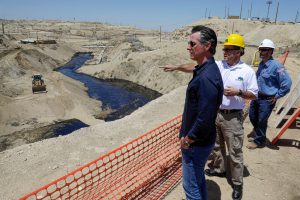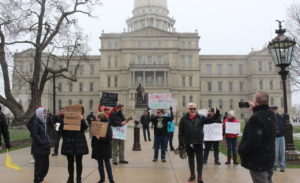Even the staunchest of naysayers have to admit that the reality of climate change has simply become impossible to ignore, as life-threatening heat waves around the globe test the very limits of the human capacity to survive.
Several regions have reported record-breaking temperatures recently, while others grapple with devastating heat indexes reaching upward of 52 degrees Celsius. Amid these unprecedented conditions, the world reached an alarming milestone last year as global temperatures hovered at an estimated 1.5 C above preindustrial levels, and as high as 1.8 C in September.
The months since then further revealed a deeply troubling and accelerating trend, as temperatures between June 2023 and May 2024 averaged 1.63 C above historic norms. The implications could not be clearer.
Keep in mind that if the rise in global temperatures is to remain below the critical threshold of 2 C above preindustrial levels, the world needs to reduce greenhouse gas emissions by at least 9 percent each year. Yet energy-related carbon dioxide emissions increased by 1.1 percent in the past year alone, a disconcerting upward trajectory that added another 400 million tonnes to an already record high of 37.4 billion tonnes.
As the mercury rises, agriculture — the lifeblood of civilization — faces an existential threat. Unforgiving temperatures, coupled with crippling droughts, have become increasingly common in breadbasket regions. More frequent heat waves are having significant effects on agricultural production through direct impacts on crop yields.
For instance, it is estimated that each 1 C increase in the mean global temperature could result in reductions of 6 percent in crop yields for wheat, 3.2 percent for rice, and 3.2 percent for maize.
These effects are already being felt in regions critical to global food production, as frequent and prolonged extreme heat events diminish agricultural outputs and reduce food availability. As a result, prices soar, exacerbating food insecurity challenges among the poor who are forced to spend increasingly significant proportions of their meager incomes simply to survive.
Elsewhere, we are likely to see more “heatflation,” a phenomenon in which sharp increases in the costs of food production as a result of climate-related disruptions cause globe-spanning food price shocks. Elevated food prices exacerbate poverty levels among those least able to adjust or adapt, at the same time as incomes shrink as a result of the collapse of entire agricultural sectors.
The persistent climate-related emergencies we have witnessed offer irrefutable evidence that the window of opportunity for the application of more-moderate remedies has narrowed considerably in recent years.
The prognosis is increasingly grim as soaring heat indexes, growing carbon dioxide emissions, and the resulting threats to core pillars of survival, such as agriculture, paint a picture of a global threat that demands a unified and decisive response.
The recent spate of record-breaking heat waves, prolonged droughts, and intense floods are the clearest indictment yet of the slow, bumbling nature of the global response to the climate crisis.
Hafed Al-Ghwell
Factor in geopolitical tensions, conflicts and regional convulsions and the window for action narrows even further. As a result, climate change interventions require not only urgent policy actions but a societal shift to confront what is the defining challenge of our time. Inaction is a luxury the world simply can no longer afford.
One might assume that given the well-documented risks, the demonstrable effects, a wide range of proposed solutions, and almost global buy-in, decisive action to tackle climate change would be significant and universal.
However, the recent spate of record-breaking heat waves, prolonged droughts and intense floods are the clearest indictment yet of the slow, bumbling nature of the global response to the climate crisis.
Despite the looming threat and mounting evidence of the risks, decisive action on a global scale remains elusive, hindered by a fragmented approach to climate policy that borders on willful inaction.
Amid the growing crises and a continuing lack of effective responses, a troubling reality persists. Much-anticipated larger interventions deemed necessary to steer the planet away from catastrophic climate disasters remain on the distant horizon, their implementation obstructed by protracted negotiations and entrenched bureaucratic inertia.
Across the various international forums at which consensus on ambitious climate initiatives is sought, the discussions are frequently mired in painstaking deliberations that too often devolve into contentious debates over the minutiae of the language used in joint declarations.
This process underscores not only the complex nature of efforts to agree and implement uniform global action, but also the challenges that persist in attempting to align disparate national interests and priorities within an increasingly urgent timeline dictated by escalating tragedies.
The gulf between the rhetoric governments espouse regarding climate change and the tangible policies they actually implement is widening. This gap is emblematic of the current state of international climate politics, in which stated intentions and actual outcomes seldom align.
While the scientific community continues to issue increasingly dire warnings about the need to limit global temperature rises during this century, the pace of governmental responses remains glacial. The critical transformations necessary to address the worst effects of climate change, spanning economic, social and environmental dimensions, continue to be stalled by negotiations that focus more on form than substance.
While the UN’s annual COP climate change conferences, and others like them, can successfully convene world leaders, scientists, and activists in an attempt to forge effective paths forward, very often the outcomes fall far short of expectations due to the delicate dance of diplomatic compromise.
The declarations and joint statements that emerge from these events, while symbolically important, frequently lack the means for enforcement, which is required to precipitate real change. The reliance on voluntary national contributions to reductions in greenhouse gas emissions epitomizes this challenge, creating a scenario in which predictive models of climate mitigation are based less on substance, science and sound deliberation than on political calculations.
Furthermore, glaring disparities between regions in their present vulnerability to climate-induced disasters, and their capacities to respond to them, is probably influencing some key decision-makers to kick decisions on commitments to a credible global plan of action further down the road. In their view, we have yet to reach a “crisis point” and so warnings from scientists and experts are simply dismissed as alarmist climate “doomerism.”
However, there is no single “crisis point” that will eventually prompt a unified, global response and the delaying of critical decisions in anticipation of reaching it is already proving disastrous.
On a particularly morbid note, such a stance implies a tolerance for “acceptable losses.” In other words certain countries or regions might have to become uninhabitable before the others decide it is time to take substantive action.
The implications of this are troubling. It means that willful inaction and delayed responses to climate change mitigation and adaptation are conscious decisions being taken by some as calculated risks. However, such thinking severely underestimates the threat-amplifying nature of the effects of climate change. Delayed action will not preserve the status quo for some, as they hope, but will rather intensify the future effects from which no region will be spared.
The sweltering temperatures recorded this month are likely to be eclipsed in the coming weeks, setting new records and benchmarks, with tragic results. To see whether or not the toll of this finally leads to decisive global action, we will have to wait until November when the world gathers in Baku, the capital of Azerbaijan, for COP29.
If precedent is anything to go by, it is unlikely we will see anything significant or groundbreaking between now and then, or at the conference or future gatherings. Instead, the debilitating status quo will persist and, as always, it is the most vulnerable people in the most vulnerable regions that will pay the heaviest price.
- Hafed Al-Ghwell is a senior fellow and executive director of the North Africa Initiative at the Foreign Policy Institute of the Johns Hopkins University School of Advanced International Studies in Washington, DC. X: @HafedAlGhwell
Disclaimer: Views expressed by writers in this section are their own and do not necessarily reflect Arab News’ point of view




